Sex! Murder! Rampaging beasts, heaving bosoms and little green men from outer space! Who wouldn’t want to read a book that promised the reader lurid delights like that?! We’re in the realm of pulp fiction of course, which really hit its straps in the newly-adventurous America of the post-war years. Across the border down Mexico way, the Latinos were getting into the same kind of suspense thrillers, except their version of the pulp novellas went just that little bit further.
Soft-core titillation was still rife, but the Mexican market had an appetite for weirdness that outdid the Americans on nearly every level. The violence was ratcheted up, but it was the addition of incongruous elements such as sci-fi, psychedelia, the supernatural, dinosaurs and robots into the mix that set the plots apart. There was a key difference at the centre of the narratives, too; the heroes of the Mexican books were not hard-bitten detectives or all-action paragons, but rather common men who found themselves right up against it in a struggle for survival that resonated with the working-class readership. To sell these racy parables, publishers went to town on the cover art, plunging the reader straight into the intriguing predicament by illustrating gripping scenarios before the punter had even turned to page one. Pulp Drunk: Mexican Pulp Art surveys the best of the genre at Ricco/Maresca Gallery, New York, until 7 March.
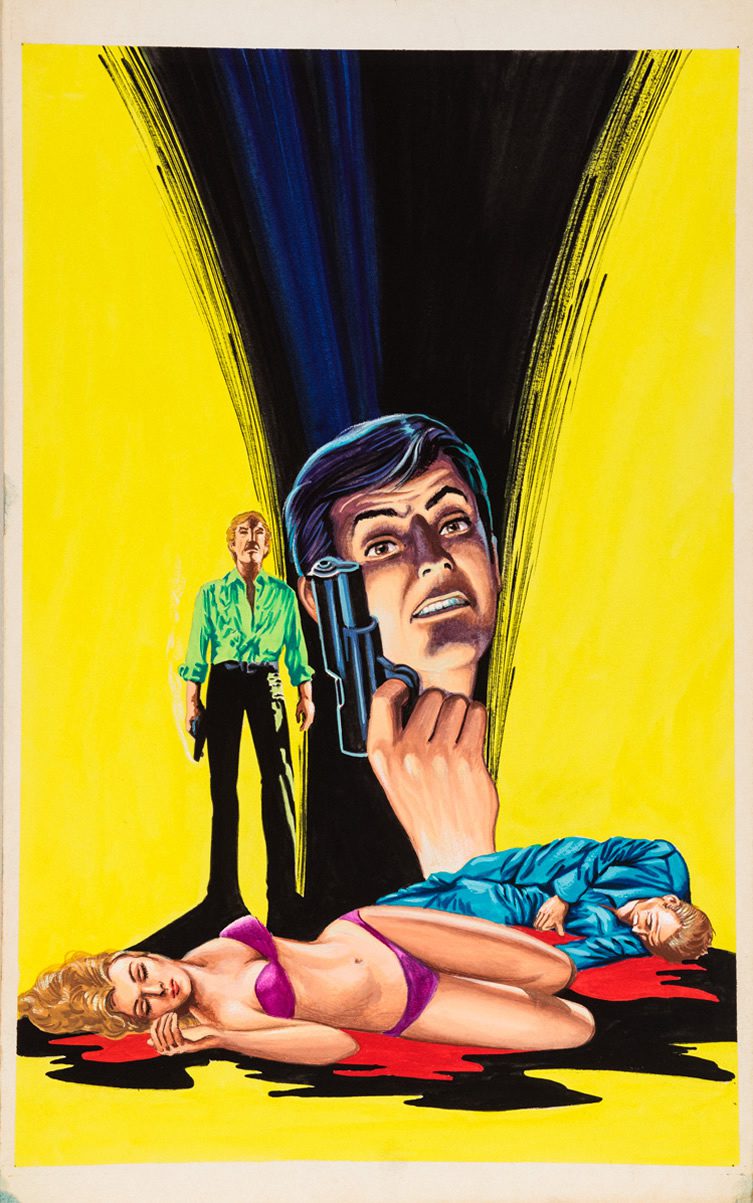
Untitled (Man with gun standing above dead woman and man)
c. 1960-75
Tempera on illustration board
15 x 11 in.
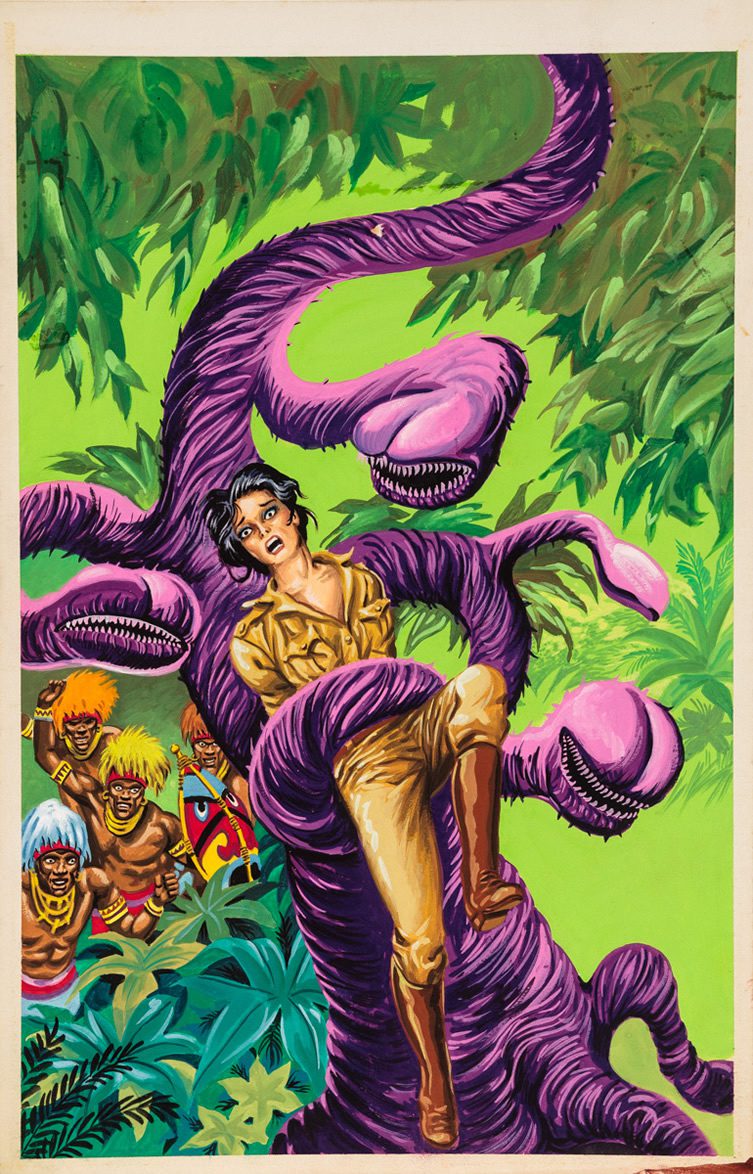
Untitled (Woman captured by evil purple vine)
c. 1960-75
Tempera on illustration board
15 x 11 in.
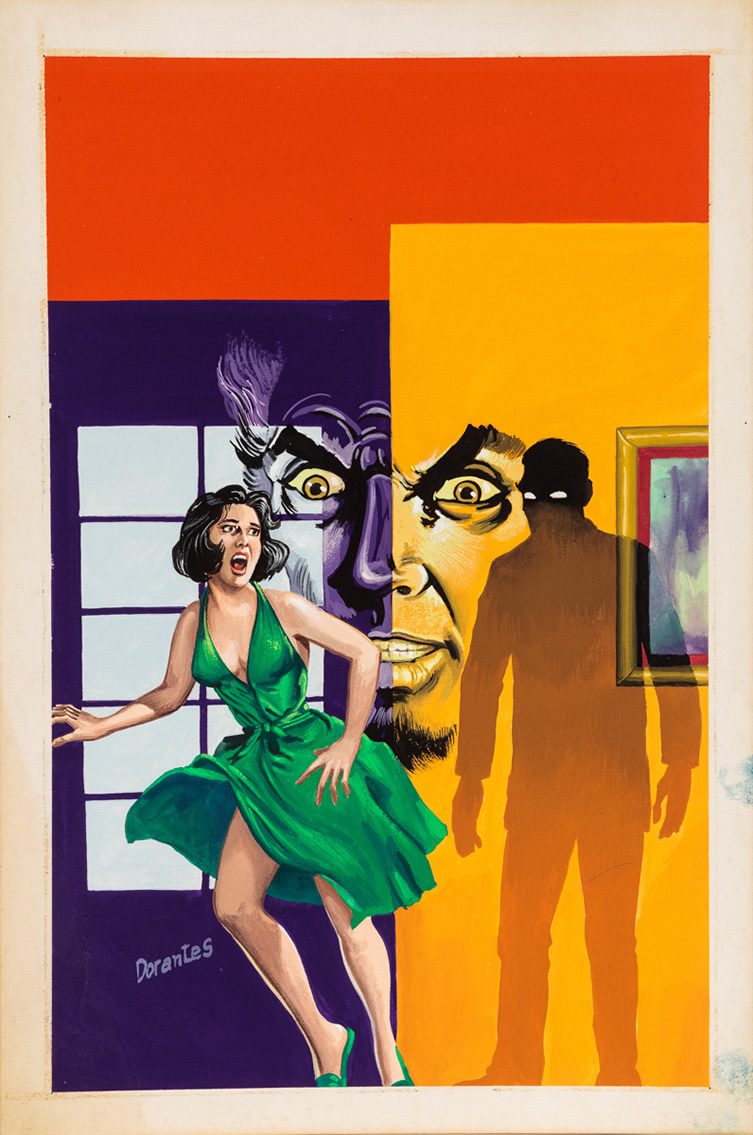
Dorantes
Untitled (Terrified woman runs from evil face and shadow man)
c. 1960-75
Tempera on illustration board
15 x 11 in
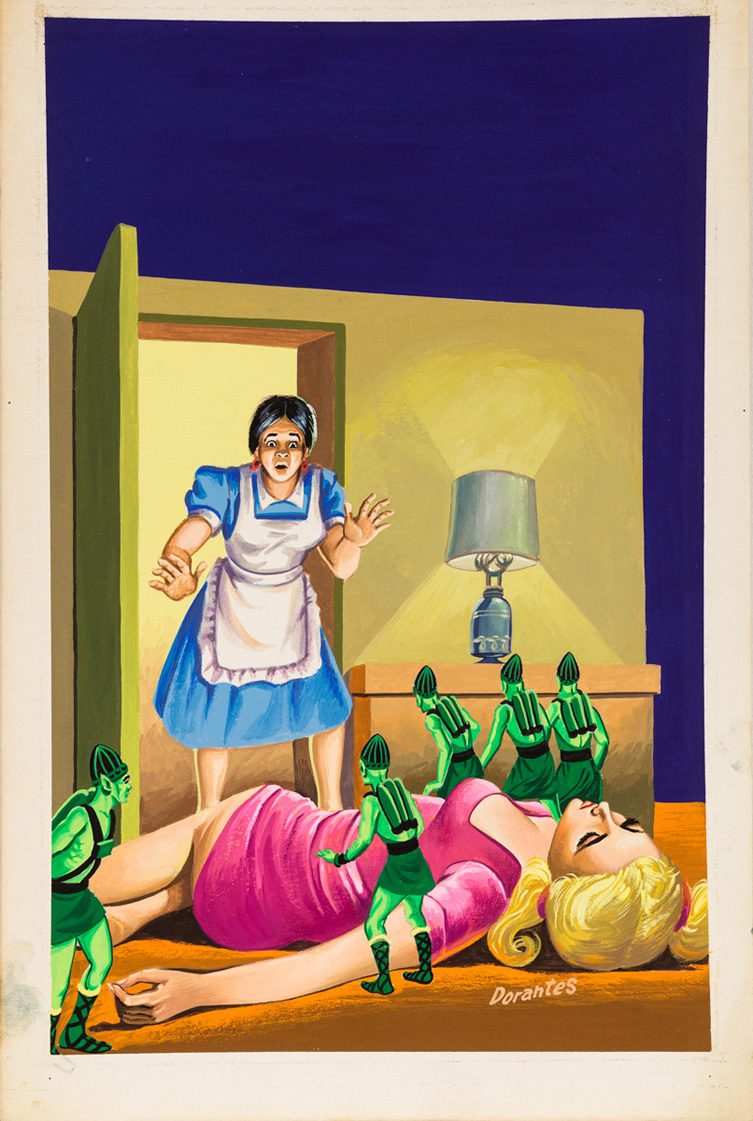
Dorantes
Untitled (Maid interrupting little green alien attack)
c. 1960-75
Tempera on illustration board
15 x 11 in
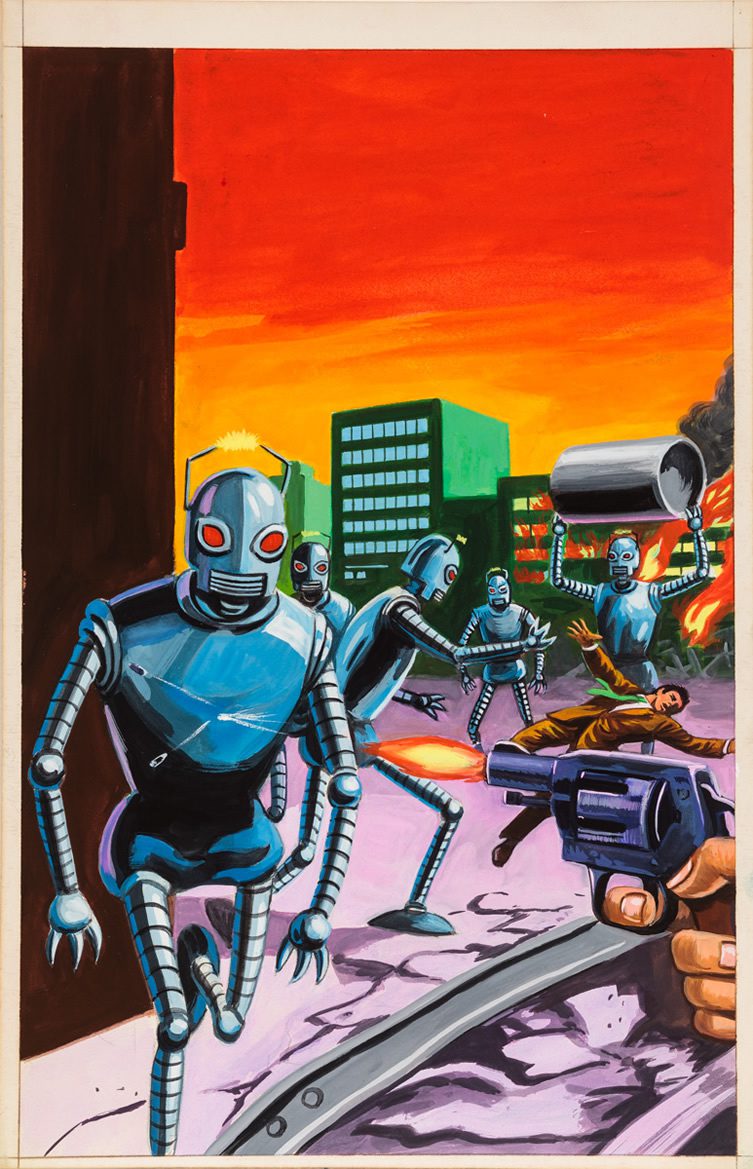
Untitled (Robots attacking city)
c. 1960-75
Tempera on illustration board
15 x 11 in.
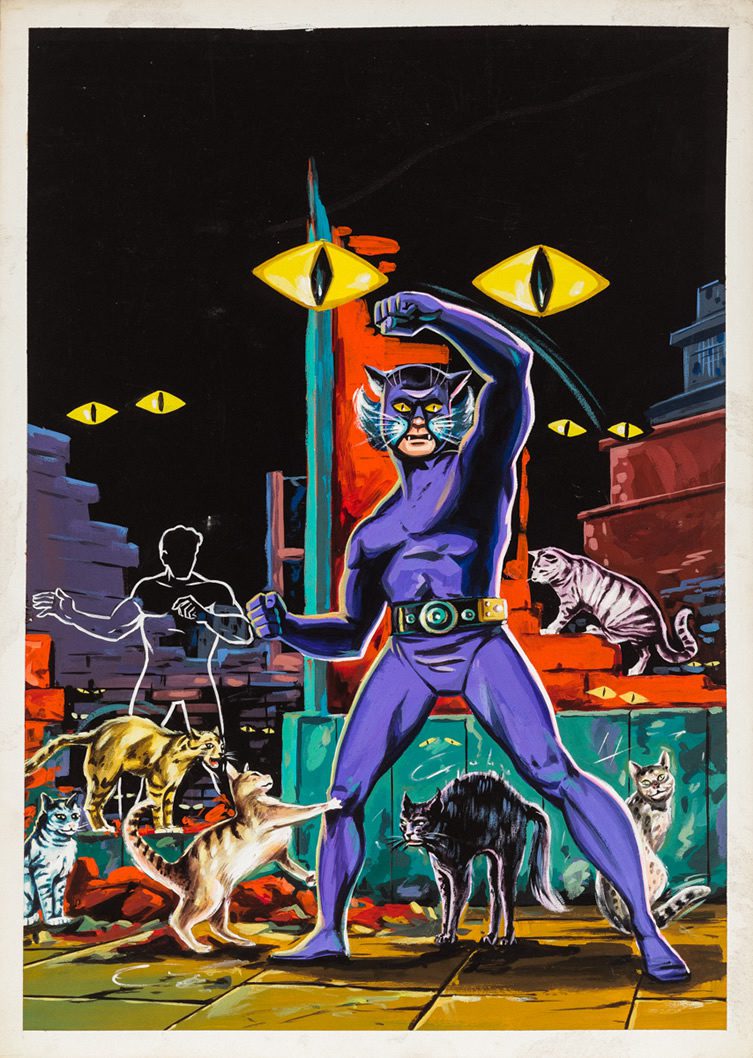
Untitled (Cat man)
c. 1960-75
Tempera on illustration board
15 x 11 in.
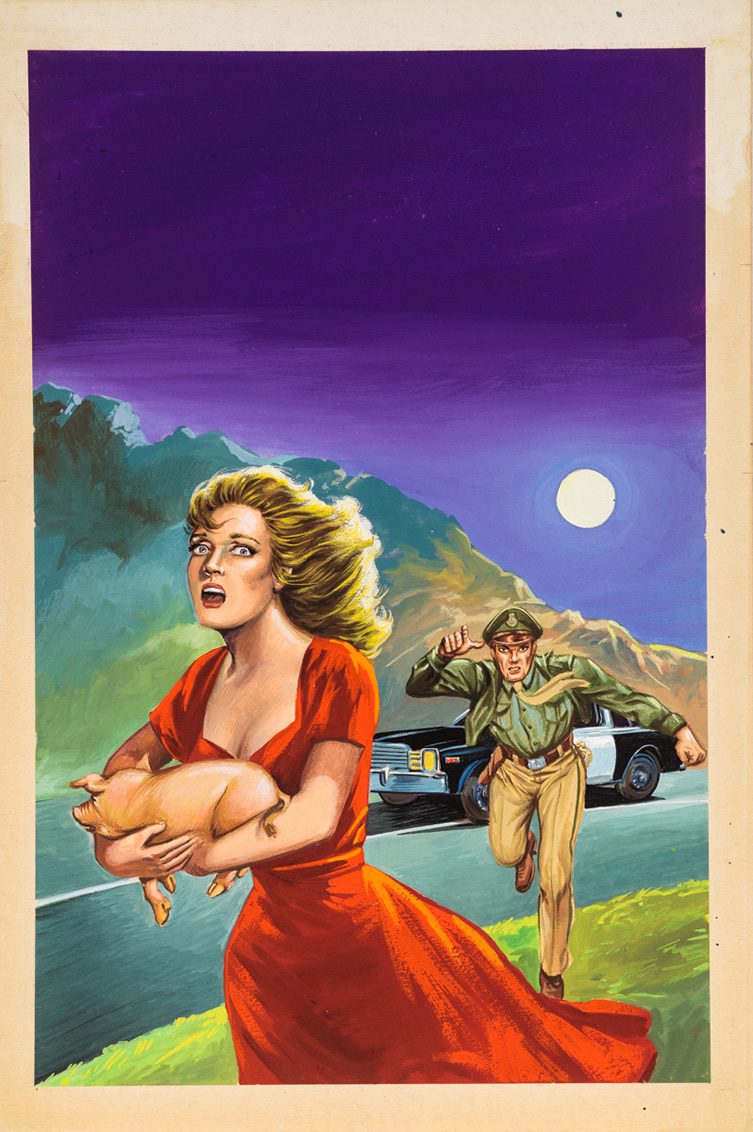
Untitled (Woman holding pig, cop in pursuit)
c. 1960-75
Tempera on illustration board
15 x 11 in








